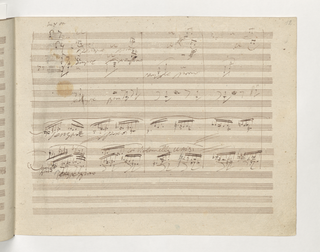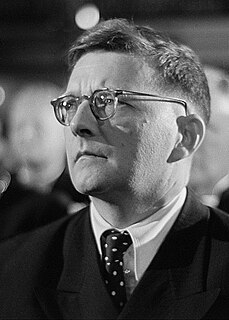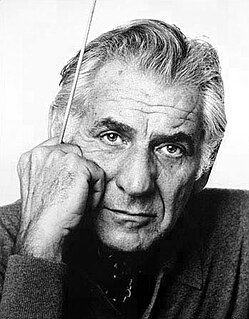The symphonies
| Number | Key | Opus | Year | Incipit |
|---|---|---|---|---|
| "Zwickau" | G minor | WoO 29 | 1832/33 | |
| 1 "Spring" | B♭ major | Op. 38 | 1841 |  |
| 2 | C major | Op. 61 | 1846 |  |
| 3 "Rhenish" | E♭ major | Op. 97 | 1850 |  |
| 4 | D minor | Op. 120 | 1841 (revised in 1851) |  |
This article is being considered for deletion in accordance with Wikipedia's deletion policy. Please share your thoughts on the matter at this article's deletion discussion page. |
There are four complete symphonies by the Romantic composer Robert Schumann, and one early incomplete symphony from 1832/33.
| Number | Key | Opus | Year | Incipit |
|---|---|---|---|---|
| "Zwickau" | G minor | WoO 29 | 1832/33 | |
| 1 "Spring" | B♭ major | Op. 38 | 1841 |  |
| 2 | C major | Op. 61 | 1846 |  |
| 3 "Rhenish" | E♭ major | Op. 97 | 1850 |  |
| 4 | D minor | Op. 120 | 1841 (revised in 1851) |  |

The Symphony No. 9 in D minor, Op. 125, is a choral symphony, the final complete symphony by Ludwig van Beethoven, composed between 1822 and 1824. It was first performed in Vienna on 7 May 1824. The symphony is regarded by many critics and musicologists as Beethoven's greatest work and one of the supreme achievements in the history of music. One of the best-known works in common practice music, it stands as one of the most performed symphonies in the world.

Dmitri Dmitriyevich Shostakovich (Russian:

Ludwig van Beethoven was a German composer and pianist whose music ranks amongst the most performed of the classical music repertoire; he remains one of the most admired composers in the history of Western music. His works span the transition from the classical period to the romantic era in classical music. His career has conventionally been divided into early, middle, and late periods. The "early" period, during which he forged his craft, is typically considered to have lasted until 1802. From 1802 to around 1812, his "middle" period showed an individual development from the "classical" styles of Joseph Haydn and Wolfgang Amadeus Mozart, and is sometimes characterized as "heroic." During this time he began to suffer increasingly from deafness. In his "late" period from 1812 to his death in 1827, he extended his innovations in musical form and expression.

An orchestra is a large instrumental ensemble typical of classical music, which combines instruments from different families, including bowed string instruments such as the violin, viola, cello, and double bass, brass instruments such as the horn, trumpet, trombone and tuba, woodwinds such as the flute, oboe, clarinet and bassoon, and percussion instruments such as the timpani, bass drum, triangle, snare drum, cymbals, and mallet percussion instruments each grouped in sections. Other instruments such as the piano and celesta may sometimes appear in a fifth keyboard section or may stand alone, as may the concert harp and, for performances of some modern compositions, electronic instruments.

Leonard Bernstein was an American composer, conductor, pianist, music educator, author, and lifelong humanitarian. He was one of the most significant American cultural personalities of the 20th century. According to music critic Donal Henahan, he was "one of the most prodigiously talented and successful musicians in American history".

A symphony is an extended musical composition in Western classical music, most often written by composers for orchestra. Although the term has had many meanings from its origins in the ancient Greek era, by the late 18th century the word had taken on the meaning common today: a work usually consisting of multiple distinct sections or movements, often four, with the first movement in sonata form. Symphonies are almost always scored for an orchestra consisting of a string section, brass, woodwind, and percussion instruments which altogether number about 30 to 100 musicians. Symphonies are notated in a musical score, which contains all the instrument parts. Orchestral musicians play from parts which contain just the notated music for their own instrument. Some symphonies also contain vocal parts.

Gustav Mahler was an Austro-Bohemian Romantic composer, and one of the leading conductors of his generation. As a composer he acted as a bridge between the 19th century Austro-German tradition and the modernism of the early 20th century. While in his lifetime his status as a conductor was established beyond question, his own music gained wide popularity only after periods of relative neglect, which included a ban on its performance in much of Europe during the Nazi era. After 1945 his compositions were rediscovered by a new generation of listeners; Mahler then became one of the most frequently performed and recorded of all composers, a position he has sustained into the 21st century. In 2016, a BBC Music Magazine survey of 151 conductors ranked three of his symphonies in the top ten symphonies of all time.

The Symphony No. 9 in E minor, "From the New World", Op. 95, B. 178, popularly known as the New World Symphony, was composed by Antonín Dvořák in 1893 while he was the director of the National Conservatory of Music of America from 1892 to 1895. It has been described as one of the most popular of all symphonies. In older literature and recordings, this symphony was – as for its first publication – numbered as Symphony No. 5. Astronaut Neil Armstrong took a tape recording of the New World Symphony along during the Apollo 11 mission, the first Moon landing, in 1969. The symphony was completed in the building that now houses the Bily Clocks Museum.

Silly Symphony is a series of 75 animated musical short films produced by Walt Disney Productions from 1929 to 1939. As their name implies, the Silly Symphonies were originally intended as whimsical accompaniments to pieces of music. As such, the films usually had independent continuity and did not feature continuing characters, unlike the Mickey Mouse shorts produced by Disney at the same time. The series is notable for its innovation with Technicolor and the multiplane motion picture camera, as well as its introduction of the character Donald Duck making his first appearance in the Silly Symphony cartoon The Wise Little Hen in 1934. Seven shorts won the Academy Award for Best Animated Short Film.

The Chicago Symphony Orchestra (CSO) was founded by Theodore Thomas in 1891. The ensemble makes its home at Orchestra Hall in Chicago and plays a summer season at the Ravinia Festival. The music director is Riccardo Muti, who began his tenure in 2010. The CSO is one of five American orchestras commonly referred to as the "Big Five".

Leopold Anthony Stokowski was an English conductor of Polish and Irish descent. One of the leading conductors of the early and mid-20th century, he is best known for his long association with the Philadelphia Orchestra and his appearance in the Disney film Fantasia with that orchestra. He was especially noted for his free-hand conducting style that spurned the traditional baton and for obtaining a characteristically sumptuous sound from the orchestras he directed.

Michael Tilson Thomas is an American conductor, pianist and composer. He is currently the artistic director of the New World Symphony, an American orchestral academy based in Miami Beach, Florida. He is also Music Director Laureate of the San Francisco Symphony and Conductor Laureate of the London Symphony Orchestra.

C major is a major scale based on C, with the pitches C, D, E, F, G, A, and B. C major is one of the most common key signatures used in western music. Its key signature has no flats and no sharps. Its relative minor is A minor and its parallel minor is C minor.

C minor is a minor scale based on C, consisting of the pitches C, D, E♭, F, G, A♭, and B♭. Its key signature consists of three flats. Its relative major is E♭ major and its parallel major is C major.

D major is a major scale based on D, consisting of the pitches D, E, F♯, G, A, B, and C♯. Its key signature consists of two sharps. Its relative minor is B minor and its parallel minor is D minor.

In music theory, B-flat major is a major scale based on B♭, with pitches B♭, C, D, E♭, F, G, and A. Its key signature has two flats. Its relative minor is G minor and its parallel minor is B-flat minor.

E-flat major is a major scale based on E♭, with the pitches E♭, F, G, A♭, B♭, C, and D. Its key signature has three flats: B, E, and A. Its relative minor is C minor, while its parallel minor is E♭ minor.

D minor is a minor scale based on D, consisting of the pitches D, E, F, G, A, B♭, and C. Its key signature has one flat. Its relative major is F major and its parallel major is D major.

"Bitter Sweet Symphony" is a song by English rock band the Verve. It is the lead track on their third studio album, Urban Hymns (1997). It is based on a sample it uses from the Andrew Loog Oldham orchestral cover of the Rolling Stones' song "The Last Time", and involved some legal controversy surrounding a plagiarism charge. As a result, Mick Jagger and Keith Richards were added to the songwriting credits, and all royalties from the song went to former Rolling Stones manager Allen Klein. In April 2019, Jagger and Richards signed over all their publishing for the song to Richard Ashcroft. The song was released on 16 June 1997 by Hut Recordings as the first single from the album, reaching number two on the UK Singles Chart and remaining in the chart for three months.

The Symphony No. 5 in C minor of Ludwig van Beethoven, Op. 67, was written between 1804 and 1808. It is one of the best-known compositions in classical music and one of the most frequently played symphonies, and it is widely considered one of the cornerstones of western music. First performed in Vienna's Theater an der Wien in 1808, the work achieved its prodigious reputation soon afterward. E. T. A. Hoffmann described the symphony as "one of the most important works of the time". As is typical of symphonies during the transition between the Classical and Romantic eras, Beethoven's Fifth Symphony is in four movements.